“Swimming in warm, golden Jellyfish Lake, I’m surrounded by friendly intelligent jellyfish,” writes travel journalist and photographer Sharon Spence Lieb. “At first I’m afraid I’ll be stung. But these creatures are different: They caress my body and embrace my face. These gelatinous orbs seem downright curious. If I could laugh underwater I would. Who would ever think jellyfish could be so harmless? I’ll remember this sensational wildlife encounter as one of the most wonderful experiences of my life. You’ve got to experience this for yourself.”
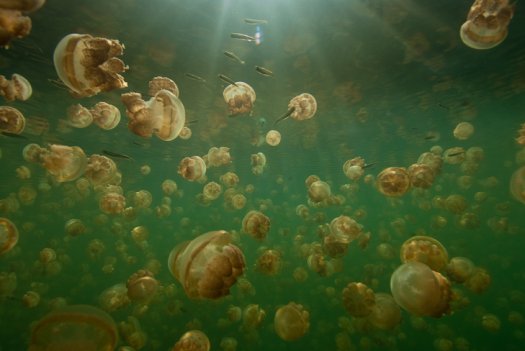
Lieb lives near the Atlantic Ocean and the beaches of Charleston, South Carolina. She knows that encounters with jellyfish can often end in pain. “I once got tangled in a jellyfish’s tentacles,” she recalls. “I was covered in painful welts. But Palau’s jellyfish don’t sting. They’ve evolved without predators, and they’re living peacefully in Palau. Maybe they’re official greeters. Jellyfish Lake is one of the reasons Palau is called the 8th Natural Wonder of the World as well as one of The Seven Underwater Wonders of the World.”
Where is Palau?
Most have heard of Palau as one of Planet Earth’s legendary dive and snorkel destinations. But for those who wonder where it is, you’re not alone. Located in the westernmost corner of Micronesia, Palau is an archipelago of over 586 islands. Only 20,000 people call this area home. But those willing to travel a to this remote paradise will swim in the translucent Pacific Ocean with over 1400 species of fish, 500 species of coral living underneath the stunning Rock Islands…and incredible jellyfish in Palau’s Jellyfish Lake.
“Jellyfish Lake is a well-known tourist destination,” says Yositaka Adachi, Governor of Koror State. “To swim among millions of harmless jellyfish is an unforgettable experience. Our Government is vigilant about conserving and managing our ecological integrity. We are devoted to preserving our natural environment as part of our heritage and culture.”
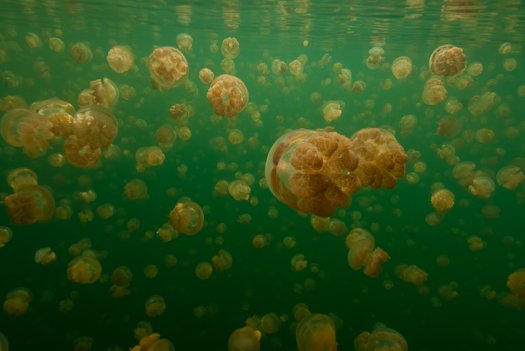
The Science Behind the Non-Stinging Jellyfish
The golden jellyfish found only in Jellyfish Lake are called “Mastigias Papua Etpisoni.” Living in their tissues are zooxanthellae, which are symbiotic dinoflagellates. Theirs is a special relationship: the jellyfish rotates in a circle and swims around Jellyfish Lake, making sure the zooxanthellae get enough sunlight for photosynthesis. In exchange, the zooxanthellae provide their jellyfish with energy and nutrients.
The jellyfish capture tiny organisms for food, with stinging cells inherited from their ancestor, Mastigias Papua. But they did not evolve to eat large vertebrates like humans. They bob peacefully in the sun and are completely harmless to snorkelers exploring beautiful Jellyfish Lake.
Jellyfish Follow the Sun
These unusual jellyfish swim in a migratory pattern seen only in Jellyfish Lake. At sunrise, they swim towards the east shoreline, stopping at the shadow line formed by overhanging trees and rocks. They hover there in the sunlit seawater. As the sun arcs overhead throughout the day, the jellies turn and swim towards the west shoreline, again stopping to bob at the shadow line. Like sunflowers, and tourists snoozing on the beach, Palau’s jellyfish are ardent sun worshippers.
A Life Changing Experience
“For twenty years, I’ve traveled the world, publishing articles about my intense encounters with wildlife,” says travel journalist Sharon Lieb. “I’ve kayaked with orca killer whales, snorkeled with beluga whales, swum with forty foot long whale sharks and photographed wild Canadian polar bears. But, never in my life have I been lovingly touched by a creature that is supposedly dangerous. Their curiosity and intelligence is humbling. Holding a jellyfish in your hand is a real The Twilight Zone moment. I suspended my fear, and floated into the Fourth Dimension, where all creatures share the joy of being alive. Open your heart for this life changing experience.
Note: for those interested in a little sneak preview, check out this video:
About Palau, Micronesia
Located in the westernmost corner of Micronesia, Palau is an archipelago of more than 586 islands with about 20,000 inhabitants. Consistently ranked as one of the world’s best dive destinations, Palau is the ultimate paradise for the adventurous traveler, boasting some of the most spectacular water features and beaches as well as the world famous Rock Islands and Jellyfish Lake. With more than 1,400 species of fish and 500 species of coral, some have called Palau the “8th Natural Wonder of the World”, while others have identified Palau as “One of the Seven Underwater Wonders of the World.” For more information about Palau, please visit www.pristineparadisepalau.com
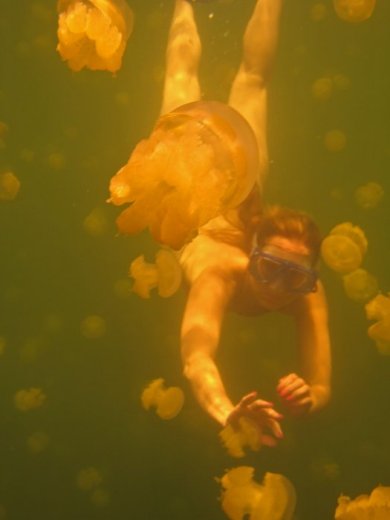

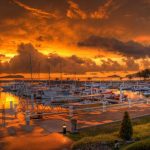


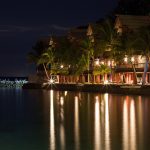


Leave a Reply